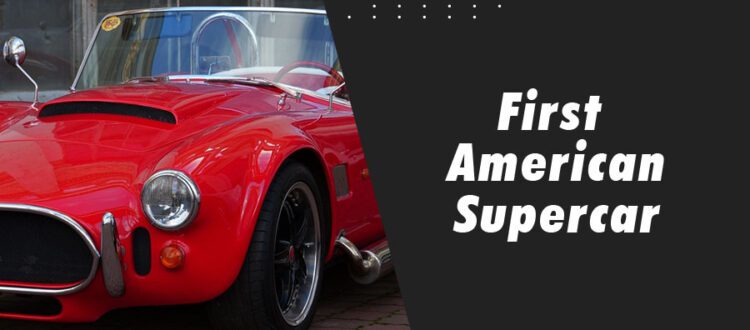First American Supercar
Supercars are paving stones for the automotive industry. They are cars with high performance and cutting-edge technology. They push the limits of the industry and innovate the future of automotive possibilities. The story of the first American supercar displays a feat of engineering, design, and performance.
The importance of the first American supercar is nothing to scoff at; it paved the way for all supercar successors and showed what is possible and what the future of the automotive industry may hold. In this article, we dive deeper into this car’s footprint in the automotive world.
Predecessors to the First American Supercar
It is an ongoing debate on which car is considered the first all-American supercar. Predecessors that may be considered the first American supercar are the Shelby Cobra, Chevrolet Corvette, Chevrolet Camaro, Ford Mustang, and the Dodge Viper concept cars. All of these models helped pave the way for the truly first American supercar. They helped innovate and gather important information that would later be used to design the American supercar.
But what was the first American sports car? The Nash-Healey was described as one of the first supercars introduced in the U.S. by one of the major automakers at the time.
Evolution of American Supercars
The term supercar, or exotic car, wasn’t in common use until the late 1920s, but pioneers such as the Vector W8 or the Shelby Cobra have paved the way for the evolution of new, modern supercars offering outstanding performance.
Vector W8
Technically, the first supercar introduced to the world as an American supercar was the Vector W8, released in 1989. The car was powered by a six-liter twin-turbo V-8 and the inventor claimed that it could make 1.200 hp, which at the time was considered top speed.
Even though it had a jet-style design, extreme reliability issues, low quality, economic challenges, high cost, and company troubles put the car into the ground three years later. However, its sleek aerodynamic design and ambitious approach to the world of supercars left a considerable mark on the automotive industry.
Shelby Cobra
The Shelby Cobra, though embodying all the characteristics of a supercar that were impressive for its time in the 1960s, was constructed using a British chassis and an American V8 engine. It was frequently used for racing, and for some, it is considered the first American supercar. But the question is, can a truly American supercar be built on a British chassis?
Chevrolet Corvette and Chevrolet Camaro
The Chevrolet Corvette and Chevrolet Camaro are sports cars that still exist and are produced to this day. These cars have evolved into high-performance sports cars displaying American engineering and design. They were some of the first truly all-American sports cars that helped in designing the American supercars that came later on.
The Legacy of American Supercars
The evolution of American supercars began in the 1950s and 1960s. The course of the American automotive industry is impressive. Boasting performance engines, robust designs, and innovation.
Early icons
Some sports cars that paved the way for every car released today were designed between the 1950s and 1990s. Most of these are cars that are still in production today. These iconic and unforgettable sports cars include:
- Chevrolet Corvette (1953–present)
- Ford Mustang (1964–present)
- Chevrolet Camaro (1966–present)
- Dodge Charger (1966–present)
- Pontiac GTO (1964–1974)
- Chevrolet Impala (1958–1985, 1994–1996)
- Plymouth Road Runner (1968–1980)
Most of these cars shared a lot of similarities, such as high-performance engines, aggressive styling, and a focus on speed and power. With many cars still in production to this day, have definitely contributed to the cultural phenomenon of powerful, stylish cars.
New generation
The new generation of supercars includes the early 2000s until the present day. Most, if not all, new-generation cars are generally based on the early icons, the design, and performance. A perfect blend of heritage and technological advancements. These newer generation cars include:
- Chevrolet Corvette (C6, C7, C8)
- Ford GT (2005, 2017–present)
- Dodge Viper (2003–2010, 2013–2017)
- Chevrolet Camaro (Fifth Generation and Beyond)
- Tesla Roadster (2008–2012, 2020–present)
- Dodge Challenger (2008–present)
Conclusion
In retrospect, the Vector W8 was introduced as the first American supercar and marked a pivotal moment in American automotive history. With its groundbreaking design, top-notch technology for its time, and formidable performance capabilities, Vector W8 not only captivated enthusiasts but unquestionably laid the foundation for several of today’s prominent automakers.
The Vector W8 was followed by the Shelby Cobra and Chevrolet– cars that would come to define the realm of supercars.






